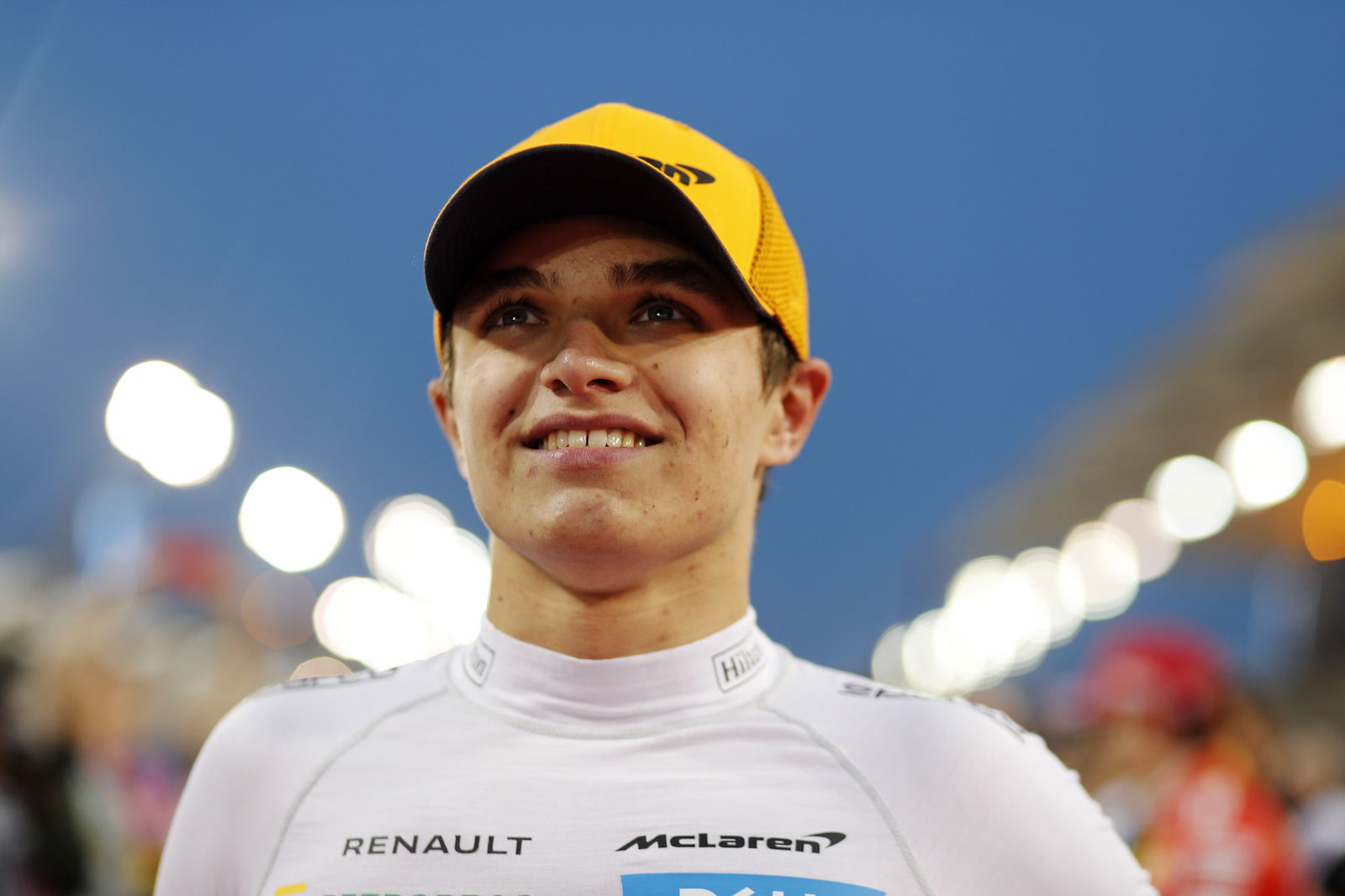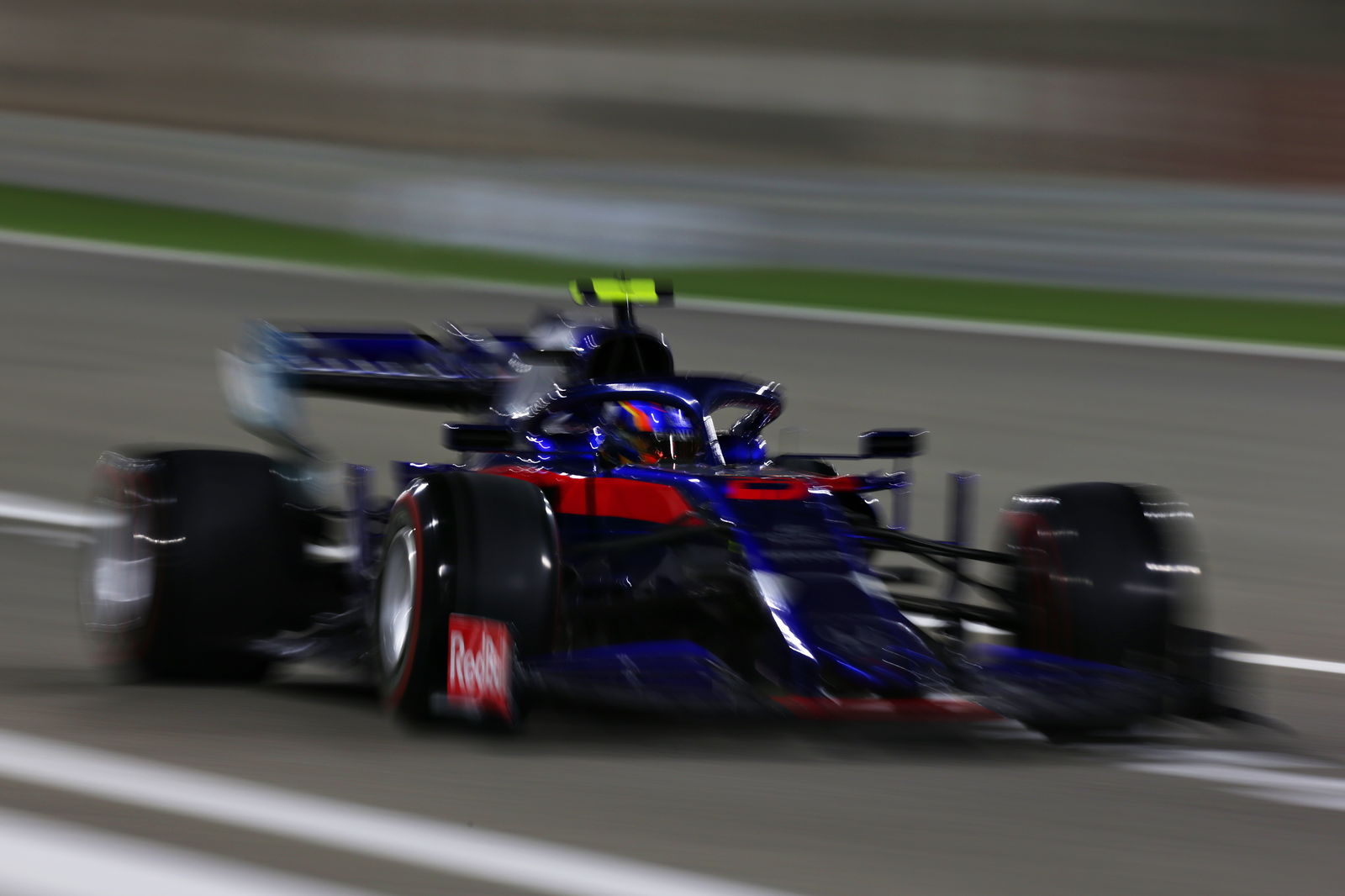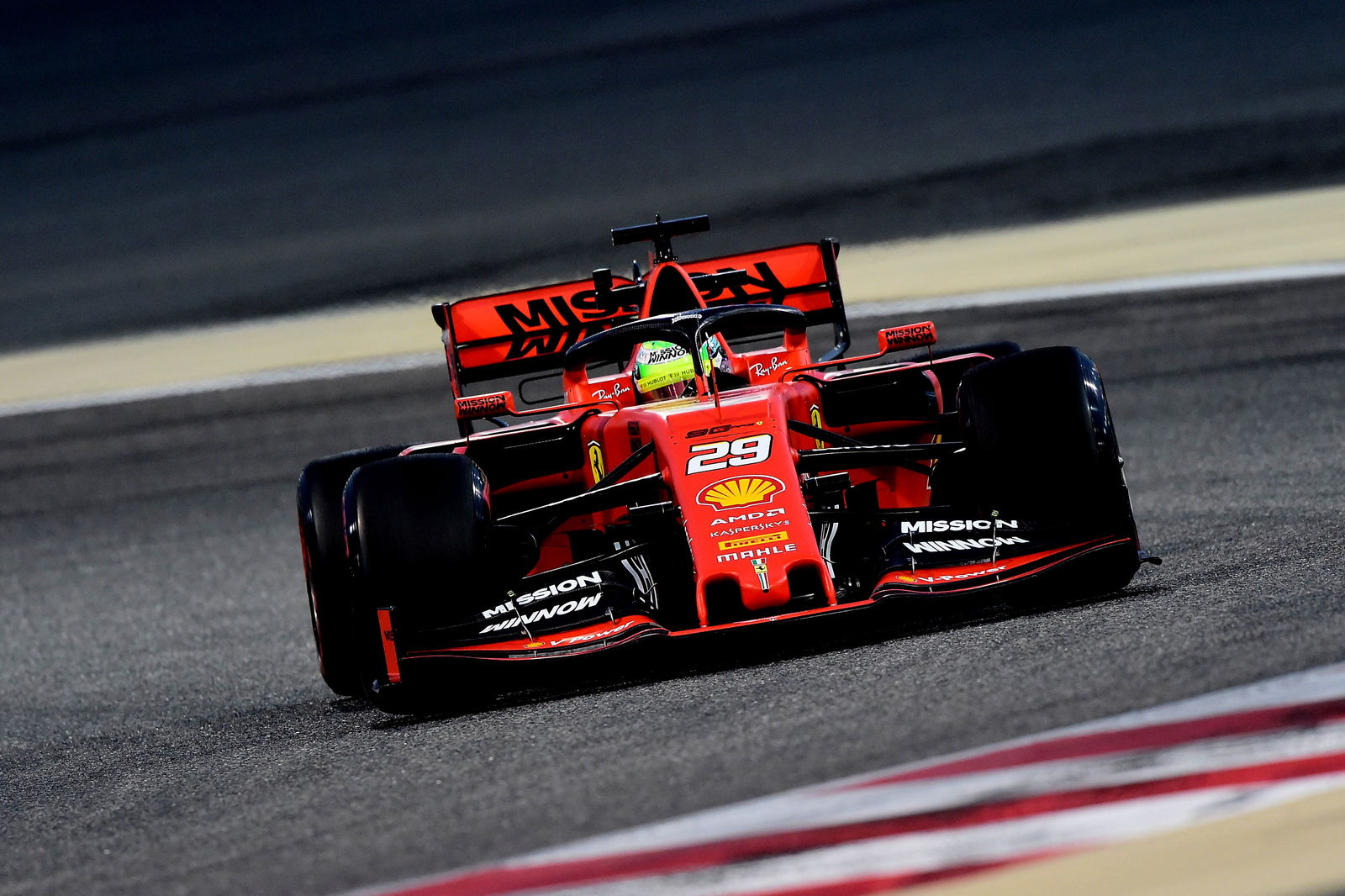F1’s new generation showing teams are right to put faith in youth
The Bahrain Grand Prix not only offered a thrilling on-track spectacle, but also marked the coming of age of Formula 1’s latest stars.
There has been something of a changing of the guard in 2019, with a host of young talents bursting onto the F1 scene. Rarely in the history of the world championship has F1 had such a wealth of young talent, with three new rookies on the grid to boot.

The Bahrain Grand Prix not only offered a thrilling on-track spectacle, but also marked the coming of age of Formula 1’s latest stars.
There has been something of a changing of the guard in 2019, with a host of young talents bursting onto the F1 scene. Rarely in the history of the world championship has F1 had such a wealth of young talent, with three new rookies on the grid to boot.
The biggest off-season switch saw Charles Leclerc get his break at Ferrari following an impressive rookie season with Sauber, taking the place of Kimi Raikkonen, who rejoined the Sauber squad he began his F1 career with (since rebranded Alfa Romeo).
Leclerc had a mixed debut in red in Australia as Ferrari mysteriously struggled for pace, but in Bahrain he showed exactly why the Italian team had opted to shake things up by making him its youngest driver in over half a century.
The 21-year-old, a serial winner in junior categories with back-to-back title triumphs in GP3 and Formula 2 in 2016 and 2017, was quicker than teammate Sebastian Vettel throughout the weekend and scored a stunning maiden F1 pole having edged out Vettel by nearly three-tenths of a second in Q3.
While Vettel may have got the better start off the line to jump into the lead, Leclerc kept his cool despite dropping down to third on the opening lap to swiftly get back up to second place when he pressured championship leader Valtteri Bottas into a mistake.
Leclerc then reeled in his four-time world champion teammate just as he did in Melbourne, though this time, he ignored calls to hold station and pulled off an excellent pass to snatch the lead from Vettel after six laps.
From there, Leclerc broke clear of the field and completely controlled proceedings. He looked destined to secure a sensational win until a cylinder on his engine stopped working 12 laps from the end, instead gifting victory to Lewis Hamilton.

It was a cruel blow for Leclerc, who had dominated and was fully deserving of what would have been his first grand prix win, though he handled the disappointment with maturity. There was no throwing toys out of the pram, no blaming the team; just acceptance that it wasn’t meant to be on this occasion.
Leclerc’s graduation prompted much excitement and hype, with many tipping him for instant success at the Scuderia. Going off his Bahrain showing, there is plenty to suggest he can challenge and beat Vettel on a regular basis in 2019. Leclerc’s performance left Hamilton suitably impressed, with the reigning world champion stating the Ferrari driver has “lots more wins” to come.
With Vettel once again cracking under pressure from Hamilton, can the Monegasque now force himself into the reckoning as the lead driver in Ferrari’s bid to finally end its wait for F1 silverware? Leclerc has been viewed as a future world champion at Ferrari, but just maybe, he will be the next.
Slightly further down the order in Bahrain - three places to be precise - another starlet was proving his worth in the shape of Lando Norris. Following his meteoric rise up the junior ranks, Norris, who since making his single-seater racing debut in 2015 has won at least one championship title in every year barring 2018, was handed his F1 bow by McLaren heading into 2019.
The 19-year-old had already accumulated plenty of on-track experience with a number of practice outings throughout the latter stages of 2018 in his previous young driver role, and stepped up to replace Stoffel Vandoorne alongside Carlos Sainz in McLaren’s new-look driver line-up.
Losing the presence of two-time world champion Fernando Alonso - who has acted as the lynchpin in the team’s recovery bid in recent years by dragging uncompetitive machinery beyond its limits - was a big blow for McLaren.
The relatively inexperienced partnership of Norris and Sainz marked the first occasion since 2006 that the Woking squad has not fielded a world champion in its line-up, leaving some reservations on the eve of the 2019 season, particularly after Norris had endured a difficult F2 season despite finishing as runner-up.

McLaren championed a new cautious approach prior to the start of 2019, differing from the bold claims of previous years following only slight improvement to sixth place in the constructors’ championship in its first year of its new engine tie-up with Renault. Alonso’s herculean efforts were essential in McLaren’s progress up the pecking order as Vandoorne underdelivered.
So far in 2019, there has been clear evidence of a step forward in performance, and Norris has flourished in the opening two rounds with an impressively fast transition into grand prix racing.
While no points were on offer at the season-opening Australian Grand Prix after starring with a brilliant qualifying performance, Norris continued to display all of the qualities that has seen him labelled as McLaren’s most promising prodigy since Hamilton stormed on to the scene at the second round in Bahrain.
He again shined in qualifying, helping the team secure its first double Q3 appearance since 2017, before turning in a brilliant drive to finish sixth, recording his first F1 points in the process. There was fortune along the way, with both Renaults suffering simultaneous failures in the closing laps, though that should not take away from Norris’ performance.
Having seen his race management so often be his Achilles’ heel in F2, Norris has made huge strides in that department and his race craft in Bahrain showed traits beyond his years as he recovered from an early setback to charge through the field. The Briton pulled off some excellent overtakes on the likes of Pierre Gasly and Kimi Raikkonen on his way to McLaren’s best result in 12 months.
The early signs are very encouraging for Norris, who is already stepping up to fill the large hole left by Alonso. Aided by a number of key changes behind the scenes at McLaren, Norris and Sainz appear to be steadying the ship, and leading the team at the start of its post-Alonso era.
The only driver to stand in Norris’ way in F2 last year was champion George Russell, who was imperious en route to mirroring the achievements of Leclerc before him by winning GP3 and F2 titles in successive years. He was the class of the 2018 field by some distance and racked up seven victories and five pole positions to bounce back from a difficult start to the season in comprehensive fashion.
The 21-year-old finds himself in a tough situation at Williams, which has once again produced the worst car on the grid this year. Delays to its FW42 caused the team to miss the opening two-and-a-half days of pre-season testing, and when its 2019 challenger finally hit the track, it was well off the pace and is dogged by “fundamental” problems which could take months to fix.

As a result, both Russell and the returning Robert Kubica have done little more than make up the numbers so far this season. It is difficult to assess the performance of a driver running in machinery that is seconds slower than the competition, but in the opening two races Russell has easily outperformed his teammate - the one true scenario in which an F1 driver can be fairly judged.
Russell would have been forgiven for getting frustrated by the predicament he finds himself in, but his approach has been a breath of fresh air for a beleaguered Williams team in need of some motivation and inspiration. The Briton has a calm head on young shoulders and he has demonstrated great maturity in his methodical attitude thus far.
Not only is he beating his teammate, but Russell is pushing Williams’ development and really taking the challenge in his stride as he bids to take on the team leader mantle. He has credited his approach to learning from how Hamilton and Bottas conduct themselves in team debriefs during his time within the Mercedes fold last year. Russell is showing all the hallmarks required of a top-level driver and could well find himself at Mercedes in the years to come.
The other rookie on the grid also comes from F2 and was something of an underrated star last season. Alexander Albon started 2018 facing an uncertain future but ultimately went on to take four wins and seal a top three finish in the championship behind Russell and Norris.
After initially looking set to forge a career in Formula E, a dramatic and unpredictable F1 driver market opened the door for an unlikely route to F1 as Albon landed a chance to impress at Toro Rosso. The team took something of a gamble by bringing in Albon to replace Brendon Hartley, with the British-born Thai driver arguably facing the biggest task of the new rookie batch having never turned a wheel in an F1 car prior to this year.
Albon out-qualified teammate Daniil Kvyat in Australia and ended his grand prix debut a solid 14th. Things got even better in Bahrain as Albon narrowly missed out on a spot in Q3 as he once again outpaced Kvyat in qualifying.

Lining up 12th on the grid, Albon steered out of the way of first-lap melee and steadily worked his way up the order, becoming another beneficiary of Renault’s late capitulation to score the first points of his fledgling F1 career in ninth.
On top of his performances, Albon has also “surprised” Toro Rosso with his strong technical feedback, a key area for any successful driver - particularly in F1’s current complex hi-tech era.
“He won last year four races, showed a really good performance and from the first test onwards I was really happy to have him in the team,” said Toro Rosso team principal Franz Tost.
“He surprised all of us by a fantastic performance and also by really good technical feedback. He has also a good overview of how to treat the tyres.
“I must say that Toro Rosso has a very, very strong driver line-up this year and I’m convinced that both of them will have a lot of success in the future.”
Max Verstappen’s rapid rise to prominence and instant F1 success largely changed attitudes teams used to have towards younger drivers, and the current crop of new drivers are going some way in showing that age is no barrier.
Teams now appear more willing than ever before to follow the 'age is just a number' mantra by backing younger drivers with clear promise and ability.
Two races into 2019, and the results are already justifying the faith shown.



